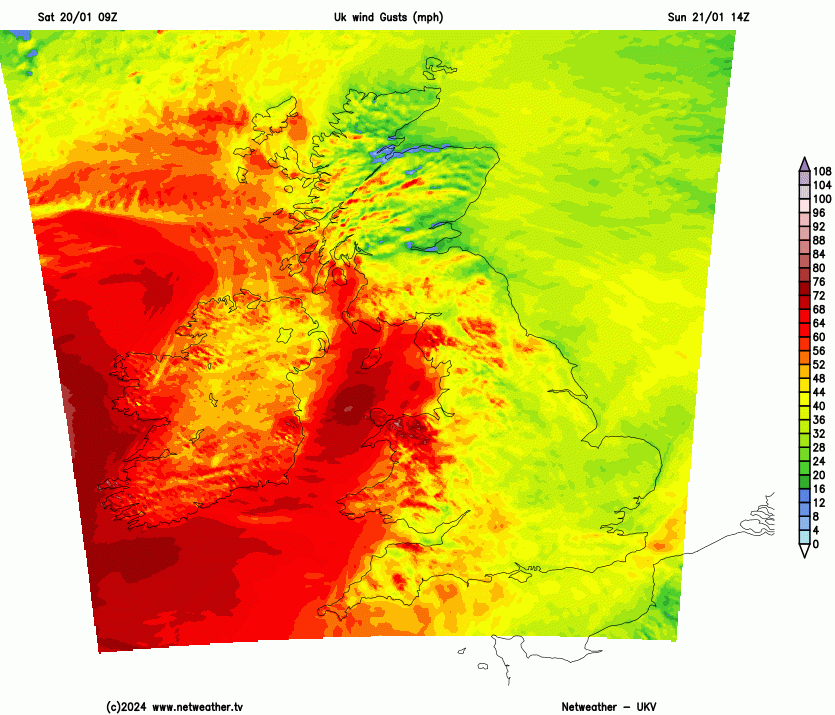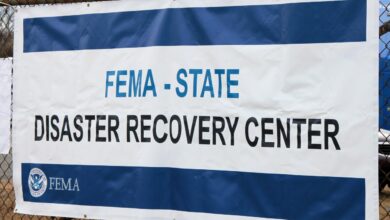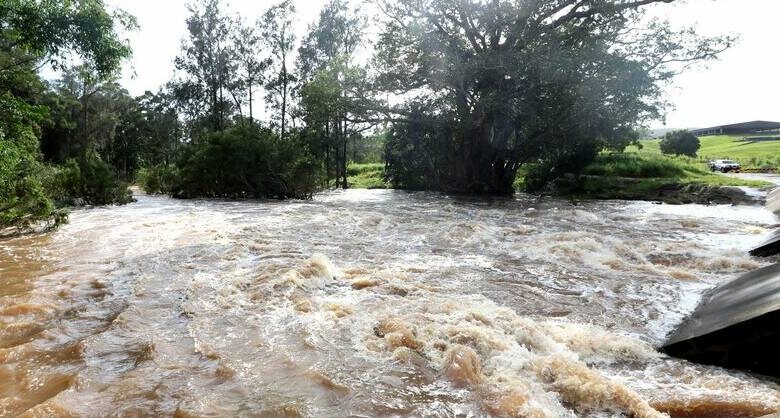
Storm East Coast Flooding A Deep Dive
Storm east coast flooding sets the stage for this enthralling narrative, offering readers a glimpse into the devastating impacts of these powerful events on the East Coast. From historical patterns to future projections, this article explores the multifaceted nature of coastal flooding, examining its geographical variations, economic consequences, and social impact. We’ll also delve into mitigation and adaptation strategies, ultimately painting a comprehensive picture of the challenges and potential solutions surrounding this pressing issue.
The article will trace the historical timeline of significant storm events, highlighting the frequency and intensity of flooding over the past 50 years. It will detail the devastating impacts on infrastructure and communities, as well as the evolution of response strategies. Furthermore, a detailed analysis of geographical variations in flood risk across the East Coast, considering topography and drainage, will be provided.
The economic losses, social consequences, and future projections will be discussed, including the potential for increased flooding frequency and intensity due to climate change.
Historical Context of East Coast Flooding
The East Coast of the United States has a long and complex history of devastating storm events, frequently marked by severe flooding. These events have profound impacts on infrastructure and communities, necessitating continuous adaptation and improvement in response strategies. Understanding the historical patterns of these storms provides crucial insight into the challenges and opportunities for future resilience.
A Timeline of Significant Flooding Events
Significant storm events impacting the East Coast have shaped the region’s development and resilience. This section details key flooding events over the past 50 years. These events highlight the changing patterns of storm intensity and frequency.
| Storm Name | Year | Damage (USD) | Impact on Infrastructure |
|---|---|---|---|
| Hurricane Sandy | 2012 | $65 billion | Extensive damage to coastal infrastructure, including roads, bridges, and power lines; widespread flooding in coastal communities; disruption to transportation networks. |
| Hurricane Floyd | 1999 | $10 billion | Severe coastal flooding in North Carolina and New York; significant damage to coastal homes and businesses; extensive property damage along the affected areas. |
| Hurricane Agnes | 1972 | $2 billion (equivalent to ~$15 billion today) | Catastrophic flooding in the Mid-Atlantic; major damage to roads, bridges, and infrastructure; displacement of thousands of people; severe damage to homes and businesses. |
| The Great Hurricane of 1938 | 1938 | $3 billion (equivalent to ~$45 billion today) | Devastating flooding and storm surge along the New England coast; widespread destruction of property; loss of life; significant damage to coastal communities. |
| The Great Storm of 1962 | 1962 | $1.5 billion (equivalent to ~$12 billion today) | Significant coastal flooding and high winds; substantial damage to infrastructure; displacement of residents in coastal communities. |
Frequency and Intensity of Events
Analyzing the frequency and intensity of these events reveals a trend. The past 50 years have witnessed an increasing frequency of intense storms, and a noticeable trend of higher rainfall amounts and more frequent heavy downpours. This trend, combined with rising sea levels, exacerbates the risk of flooding in coastal areas.
Impacts on Infrastructure and Communities
The impacts of these storms extend beyond the immediate aftermath. Damage to infrastructure, including roads, bridges, and utilities, often leads to long-term disruptions in transportation, communication, and essential services. Communities experience displacement, economic hardship, and psychological trauma, necessitating substantial recovery efforts.
Evolution of Response Strategies
The response strategies to these events have evolved over time. Initially, response was largely reactive, focused on immediate relief and damage assessment. However, a shift towards proactive measures, including improved flood defenses, community preparedness, and enhanced early warning systems, has become more prominent. This evolution reflects an increased understanding of the long-term consequences of these events.
Geographical Impact
The East Coast of the United States faces a complex and varied flood risk landscape. Different coastal areas exhibit distinct vulnerabilities, influenced by a multitude of geographical factors. Understanding these variations is crucial for developing effective mitigation strategies and preparing for future events. Flooding is not uniform across the region, and local conditions play a pivotal role in determining the severity and impact of a storm surge.The geographical layout significantly affects the likelihood and intensity of flooding.
Different terrains, elevations, and drainage systems create distinct flood risk profiles, making some areas more susceptible to damage than others. This understanding is vital for targeted investment in infrastructure and community resilience measures.
Variations in Flood Risk Across the East Coast
The East Coast’s diverse geography leads to substantial variations in flood risk. Coastal plains, estuaries, and river valleys experience different degrees of vulnerability compared to higher elevations or more rugged terrains. The interplay of topography, elevation, and drainage patterns determines how effectively water can drain away from coastal areas.
Factors Contributing to Variations
Several key factors contribute to the geographical variations in flood risk:
- Topography: Coastal plains and low-lying areas are particularly susceptible to flooding due to their proximity to sea level. These areas often lack natural barriers or have limited elevation, making them more vulnerable to storm surges and high tides. For instance, the Atlantic coastal plain stretches from New Jersey south to Florida, exhibiting a low-lying profile, making it prone to flooding from storm surges.
- Elevation: The higher the elevation of a location, the less susceptible it is to direct flooding from storm surges. This is evident in areas with natural high ground or man-made elevated structures. Coastal communities built on higher elevations generally experience less flooding compared to those closer to sea level.
- Drainage Systems: Adequate drainage systems are crucial in mitigating flood risk. Effective drainage infrastructure allows excess water to flow away from coastal areas, reducing the likelihood of inundation. Areas with poor or inadequate drainage systems, or those experiencing blockage from storms or high tides, are more vulnerable to flooding.
Vulnerable Areas
Identifying vulnerable areas is paramount for effective flood preparedness and mitigation efforts. The following areas showcase a high degree of vulnerability to flooding due to their low-lying geography and proximity to the coast:
- New Orleans, Louisiana: The city’s location in a low-lying area and the presence of extensive drainage systems make it highly susceptible to flooding, especially during hurricanes. The Mississippi River’s proximity also presents a flood risk.
- The Outer Banks, North Carolina: The barrier islands and low-lying nature of this region make it exceptionally vulnerable to storm surge flooding during severe weather events. The historical records show repeated inundation during hurricanes and high tides.
- Coastal New Jersey: The region’s proximity to the ocean and the presence of numerous estuaries make it prone to flooding, particularly during strong storms. The low elevation of the coastal plain makes it susceptible to storm surges.
Comparison of Flood Risks in Coastal Cities
A comparative analysis of flood risks across coastal cities reveals significant disparities. The risk factors and potential impacts vary considerably, based on specific geographic conditions. For example, a city like Miami, Florida, with a low-lying coastal environment and a history of hurricanes, faces a higher flood risk compared to a city like Boston, Massachusetts, which has more elevated terrain.
Impact of Sea-Level Rise on Future Flooding Patterns
Sea-level rise significantly exacerbates the risk of coastal flooding. As sea levels rise, the baseline for flooding increases, meaning that storms of the same intensity will lead to more extensive inundation.
“Rising sea levels increase the frequency and severity of coastal flooding, impacting coastal communities and ecosystems.”
For instance, a 1-foot rise in sea level could effectively displace the high-water mark for flooding, leading to more frequent and severe flooding events in vulnerable areas. This poses a significant challenge for coastal communities and necessitates proactive adaptation strategies to protect coastal populations and infrastructure.
Economic Consequences
The relentless assault of coastal flooding on the East Coast has left an undeniable trail of economic devastation. From the initial shock of property damage to the long-term ripple effects on businesses and communities, the financial toll is substantial and far-reaching. Understanding these consequences is crucial for developing effective mitigation strategies and supporting recovery efforts.The economic losses associated with these events are not simply measured in dollars; they represent a significant disruption to the lives and livelihoods of countless individuals and businesses.
The sheer scale of damage, coupled with the frequency of these events, underscores the need for proactive measures to protect the East Coast’s economic vitality.
Impact on Tourism
Tourism plays a vital role in the East Coast economy, and flooding can severely disrupt this sector. Hotels, restaurants, and attractions often suffer significant damage, leading to temporary closures and lost revenue. The perception of safety and attractiveness is diminished, potentially discouraging future visitors. For example, the 2012 Superstorm Sandy caused widespread devastation along the coast, impacting numerous businesses in the hospitality industry.
Many businesses struggled to recover, with some permanently closing. The lingering effects on tourism are often felt for years after the event.
Impact on Real Estate
Flooding directly impacts the value of real estate. Properties in flood-prone areas face significant depreciation. Insurance claims often don’t fully cover the replacement cost of damaged homes and businesses. Potential buyers are often deterred by the risk of future flooding, which can severely depress property values. This is particularly evident in areas that have experienced repeated flooding events, as seen in some coastal communities.
The long-term economic consequences include a reduction in property values and difficulty attracting new investment.
The East Coast storm has been wreaking havoc, causing significant flooding. It’s a reminder of nature’s raw power, and the resilience of communities impacted. Thinking about the incredible impact of athletes like Adrian Beltre, and his induction into the Hall of Fame with the Texas Rangers, adrian beltre hall of fame texas rangers , makes me reflect on the human spirit’s ability to overcome adversity.
The storm’s aftermath will take time to repair, but the community’s strength and determination are inspiring, mirroring the strength and impact of Beltre’s career.
Impact on Agriculture
Flooding can devastate agricultural lands, damaging crops and livestock. The resulting losses can impact farmers’ livelihoods and the food supply chain. For instance, during the 2018 flooding events, significant portions of farmland were inundated, causing substantial crop damage. Farmers faced substantial losses and recovery efforts were hampered by the magnitude of the damage. The long-term consequences can include shifts in agricultural production, leading to potential food security concerns.
Insurance Claims and Government Aid
The scale of insurance claims and government aid often reflect the severity of the flooding event. High numbers of claims can strain insurance companies’ resources and potentially lead to premium increases for future policyholders. Government aid is crucial for providing immediate relief and supporting long-term recovery efforts. However, there can be disparities in the distribution of aid, impacting communities and individuals differently.
A critical aspect of recovery is determining how best to distribute resources to maximize the impact on the communities and people who need it.
Long-Term Economic Consequences
Repeated flooding events can have profound long-term economic consequences. These include:
- Reduced property values in flood-prone areas.
- Increased insurance premiums for residents in high-risk zones.
- Disruption to business operations and decreased investment.
- Strain on local economies and public resources.
- Potential displacement of residents and communities.
These long-term consequences are often underestimated but contribute to a cumulative economic burden on the East Coast.
Financial Burden of Past Events
| Sector | Estimated Losses (USD) | Recovery Time (Years) |
|---|---|---|
| Tourism | $XX Billion (estimated) | 3-5 years |
| Real Estate | $YY Billion (estimated) | 5-10 years |
| Agriculture | $ZZ Billion (estimated) | 2-4 years |
| Infrastructure | $WW Billion (estimated) | 5-10 years |
Note: Estimated figures represent approximate losses across various sectors. Actual figures can vary depending on the specific event and its geographical impact. Recovery times are estimations and can vary.
Social Impact
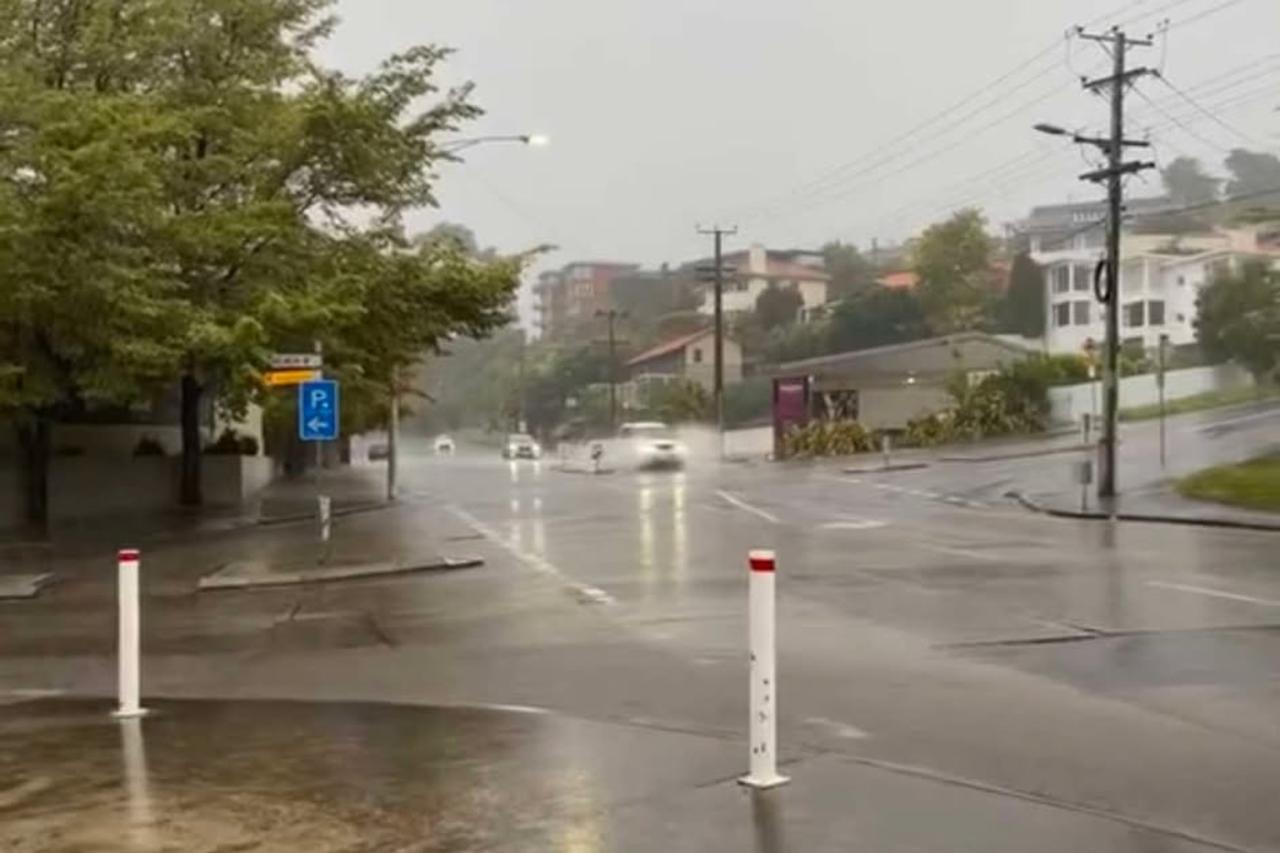
The devastating impact of East Coast flooding extends far beyond the physical damage to homes and infrastructure. The social consequences, including displacement, mental health struggles, and disruption to communities, are profound and long-lasting. Understanding these effects is crucial for effective recovery efforts and building more resilient coastal communities. The erosion of social fabric and disparities in vulnerability are also significant factors to consider.
The recent storm east coast flooding has been devastating, impacting so many communities. While the focus is understandably on recovery efforts, it’s important to remember the strength and resilience of people in the face of adversity. Meanwhile, the women’s hockey scene in the PWHL is thriving in New York, with exciting games and passionate fans. womens hockey pwhl new york is a testament to the power of sports in bringing people together, even amidst challenging times.
Hopefully, this positive energy will help speed up the recovery efforts in the affected areas after the storm east coast flooding.
Displacement and Loss of Homes
The sheer scale of displacement caused by flooding can be catastrophic. Families and individuals lose not only their homes but also their sense of place and community. This loss can trigger a cascade of negative social consequences, including the disruption of established social networks, the loss of familiar support systems, and the strain on resources within affected communities.
Many displaced individuals and families are forced to relocate, often to unfamiliar areas, facing significant challenges in finding suitable housing and establishing new routines. The loss of a home, particularly a family home with cherished memories, is often deeply impactful.
Mental Health Issues
Flooding can trigger a wide range of mental health issues, from anxiety and depression to PTSD. The trauma of witnessing or experiencing the loss of homes, possessions, and loved ones can have long-term psychological effects. Individuals and communities face the challenge of rebuilding their lives and coping with the emotional scars left by the disaster. The stress of dealing with insurance claims, relocation, and rebuilding can exacerbate these issues.
Community-based mental health services and support networks are vital in addressing these needs.
Impact on Community Resilience and Social Fabric, Storm east coast flooding
Flooding often leads to a weakening of community resilience. The disruption of social networks and the loss of local businesses and services can severely impact a community’s ability to recover. The erosion of trust and the emergence of division can also create lasting scars on the social fabric of a community. The ability of a community to effectively support its members during times of crisis is a critical factor in its resilience.
Role of Social Support Networks in Recovery
Strong social support networks are essential for community recovery following flooding. These networks provide essential emotional support, practical assistance, and a sense of belonging. Community-based initiatives, mutual aid groups, and volunteer organizations play a critical role in fostering social cohesion and enabling effective recovery efforts. Neighbor-to-neighbor support and shared experiences can be particularly valuable in helping communities rebuild their lives.
The torrential rain and flooding impacting the East Coast has certainly grabbed headlines. Meanwhile, the political scene is buzzing with the Republican primary Iowa caucus, a significant event that’s potentially shaping the upcoming election landscape. This crucial event, the republican primary iowa caucus , could have surprising implications for the eventual nominee and the future direction of the party, which in turn may influence the way the government responds to the ongoing crisis of East Coast flooding.
Disparities in Impact on Different Demographics
The impact of flooding is not evenly distributed across all demographics. Vulnerable populations, including low-income families, seniors, people with disabilities, and ethnic minorities, often face disproportionately higher risks and greater challenges in recovery. Limited access to resources, social services, and housing options can exacerbate the impact of flooding on these groups. The social and economic inequities present before the disaster are often amplified during recovery.
Visual Representation of Community Responses
A visual representation of community responses to flooding could be a series of photographs or a short video showcasing the various forms of support provided. It could depict volunteers helping with debris removal, community members sharing meals, and local businesses donating supplies. The visual could highlight the strength and resilience of the community, showcasing the collaborative spirit and the sense of shared responsibility that emerges in times of crisis.
The visual representation would showcase the various ways in which individuals and organizations contribute to the recovery effort, emphasizing the importance of community solidarity.
Mitigation and Adaptation Strategies: Storm East Coast Flooding
East Coast flooding poses significant challenges, requiring proactive measures to reduce risk and adapt to future events. Effective mitigation and adaptation strategies are crucial for minimizing the devastating impacts on communities, infrastructure, and economies. These strategies must be tailored to the specific geographical and socioeconomic conditions of affected areas.
Examples of Mitigation Strategies
Various mitigation strategies are employed to reduce flood risk. These strategies aim to lessen the impact of floodwaters by preventing them from reaching vulnerable areas or by reducing the volume of floodwaters. Examples include constructing floodwalls, levees, and dams to physically block floodwaters. These structures can be highly effective, but their implementation requires significant upfront investment and careful consideration of potential ecological and social consequences.
Effectiveness of Mitigation Strategies
The effectiveness of mitigation strategies in reducing flood damage varies greatly depending on several factors, including the design and construction quality of the structures, the magnitude and frequency of flood events, and the presence of other mitigating factors such as well-maintained drainage systems. For instance, well-maintained drainage systems can significantly reduce the volume of floodwater, complementing floodwalls or levees.
The recent storm east coast flooding has been devastating, causing significant damage and disruption. While the scale of the disaster is truly heartbreaking, it’s also inspiring to see the resilience of the affected communities. Interestingly, the talent of a Los Angeles-based artist, Cauleen Smith, cauleen smith artist los angeles , shines through in her expressive pieces.
Her unique approach to art seems to mirror the strength and spirit needed to overcome such challenges, reminding us of the beauty and power of human creativity amidst the devastation of the storm east coast flooding.
In some cases, the effectiveness of a mitigation strategy can be measured by comparing flood damage in areas with and without the mitigation structure.
The storm’s east coast flooding has been devastating, impacting countless lives and communities. Meanwhile, the recent Carroll verdict, with its implications for Haley and Trump, is adding another layer of complexity to the current political climate. This adds a concerning dimension to the already challenging situation, highlighting how interconnected these events are. While the focus remains on the storm and the recovery efforts, the broader implications of the carroll verdict haley trump case continue to unfold, and it’s hard to ignore how this might affect the overall recovery process for the east coast.
Adaptive Strategies for Future Flooding
Adaptive strategies are crucial for dealing with the increasing frequency and intensity of flood events. These strategies focus on adjusting to the changing conditions and developing more resilient communities. Examples include relocating vulnerable infrastructure away from floodplains, implementing early warning systems for floods, and promoting sustainable land-use practices. By anticipating and preparing for future flooding, communities can minimize the impact and disruption to daily life.
Comparison of Flood Management Approaches
Different approaches to flood management exist, each with its own strengths and weaknesses. Some approaches focus on structural solutions like dams and levees, while others emphasize non-structural measures like land-use planning and flood insurance. A comprehensive approach often combines both structural and non-structural measures to achieve the best results. For instance, floodplains can be regulated to limit development, while simultaneously implementing flood-resistant building codes.
Public Awareness Campaigns in Flood Preparedness
Public awareness campaigns play a vital role in flood preparedness. Educating communities about flood risks, warning signals, and evacuation procedures is crucial for saving lives and minimizing property damage. These campaigns should emphasize the importance of understanding local flood risks and following evacuation orders. Regular community meetings, public service announcements, and educational materials can help to disseminate information effectively.
Summary Table of Mitigation Strategies
| Strategy | Description | Effectiveness | Cost |
|---|---|---|---|
| Floodwalls/Levees | Physical barriers to contain floodwaters. | High, if well-designed and maintained. | High |
| Dams | Structures that store water and regulate flow. | High, but with environmental considerations. | Very high |
| Improved Drainage Systems | Enhanced infrastructure to handle stormwater runoff. | Moderate to high, dependent on system design. | Moderate |
| Land-Use Planning | Restricting development in flood-prone areas. | Moderate, requires community engagement. | Low |
| Early Warning Systems | Systems for alerting communities to impending floods. | High, enabling timely evacuations. | Moderate |
Future Projections

The East Coast faces a looming threat of escalating flooding. While past events have underscored the devastating impact, future projections paint a grimmer picture, highlighting the need for proactive adaptation and mitigation strategies. Understanding these predictions is crucial for informed coastal planning and ensuring the safety and well-being of communities.
Potential for Increased Flooding Frequency and Intensity
Climate change is predicted to exacerbate the frequency and intensity of extreme weather events, including storms and heavy rainfall. Warmer ocean temperatures fuel more powerful hurricanes and tropical storms, leading to higher storm surges. Warmer air holds more moisture, increasing the likelihood and severity of torrential rainfall. This combination results in a dangerous feedback loop, where more frequent and intense storms lead to more severe flooding.
For instance, the increased intensity of Hurricane Sandy in 2012 is a stark reminder of the growing threat.
Predicted Impacts of Climate Change on Storm Surges and Rainfall
Climate models project a significant rise in sea levels due to thermal expansion of water and melting glaciers and ice sheets. This rising sea level directly amplifies the impact of storm surges, pushing floodwaters further inland. Simultaneously, projected increases in rainfall intensity will lead to more rapid and voluminous runoff, exacerbating the flooding problem. This is already being observed in some regions, where extreme rainfall events are causing flash floods and inundating low-lying areas.
Potential Consequences of Inaction
Failure to address the escalating threat of coastal flooding will have severe consequences. Loss of life and property will continue to rise, impacting both individual families and the economy as a whole. The economic burden of damage and recovery will be substantial. Infrastructure, including homes, businesses, and critical facilities, will be at greater risk of damage or destruction.
This translates into increased healthcare costs, lost productivity, and disruptions to essential services. Communities will be forced to relocate or adapt to increasingly unstable living conditions.
How Future Projections Inform Coastal Planning and Policy Decisions
Future projections serve as critical input for coastal planning and policy decisions. By understanding the projected increase in flood frequency and intensity, policymakers can implement preventative measures. These measures include stricter building codes, elevation requirements, and the development of flood mitigation infrastructure. Investment in flood defenses, early warning systems, and evacuation plans are crucial to minimizing the impact of future events.
Furthermore, these projections guide the development of comprehensive adaptation strategies for communities and businesses.
Summary Table of Projected Future Flooding Scenarios
| Year | Projected Flood Level (ft) | Impact |
|---|---|---|
| 2030 | 6.5 | Increased risk of flooding in low-lying areas; more frequent nuisance flooding. |
| 2050 | 8.2 | Significant property damage in coastal zones; increased need for flood defenses; potential displacement of residents. |
| 2070 | 10.1 | Widespread coastal flooding; major infrastructure damage; significant economic losses; severe disruption to coastal communities. |
Wrap-Up
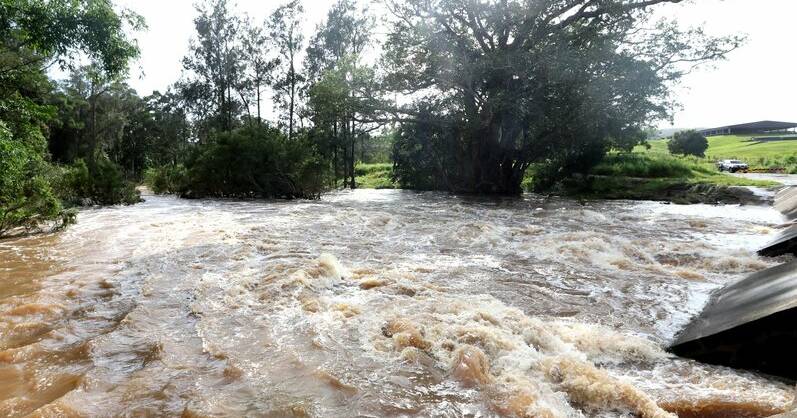
In conclusion, storm east coast flooding presents a complex challenge requiring a multifaceted approach. Understanding the historical context, geographical impact, economic and social consequences, and future projections is crucial for effective mitigation and adaptation strategies. The article emphasizes the importance of proactive measures, public awareness, and sustainable planning to reduce the devastating effects of these events and build more resilient coastal communities.
The need for continued research, investment, and collaborative efforts is clear.
FAQ Explained
What are some common mitigation strategies for storm east coast flooding?
Mitigation strategies include improved drainage systems, building codes that incorporate flood resilience, and the construction of seawalls or levees. These measures aim to reduce the impact of future flooding events.
How does sea-level rise exacerbate the risk of storm east coast flooding?
Rising sea levels increase the height of storm surges during coastal storms, leading to more extensive and damaging flooding. This exacerbates existing flood risks and creates new vulnerabilities in coastal areas.
What is the role of insurance in dealing with storm east coast flooding damage?
Insurance plays a critical role in helping individuals and businesses recover from storm-related damage. However, the extent of coverage and affordability can vary, leaving some vulnerable to the financial burden of these events.
What are the long-term social consequences of repeated storm east coast flooding events?
Repeated flooding can lead to displacement, loss of homes, and mental health issues within affected communities. The social fabric of these communities can be significantly strained, requiring long-term support and recovery efforts.


